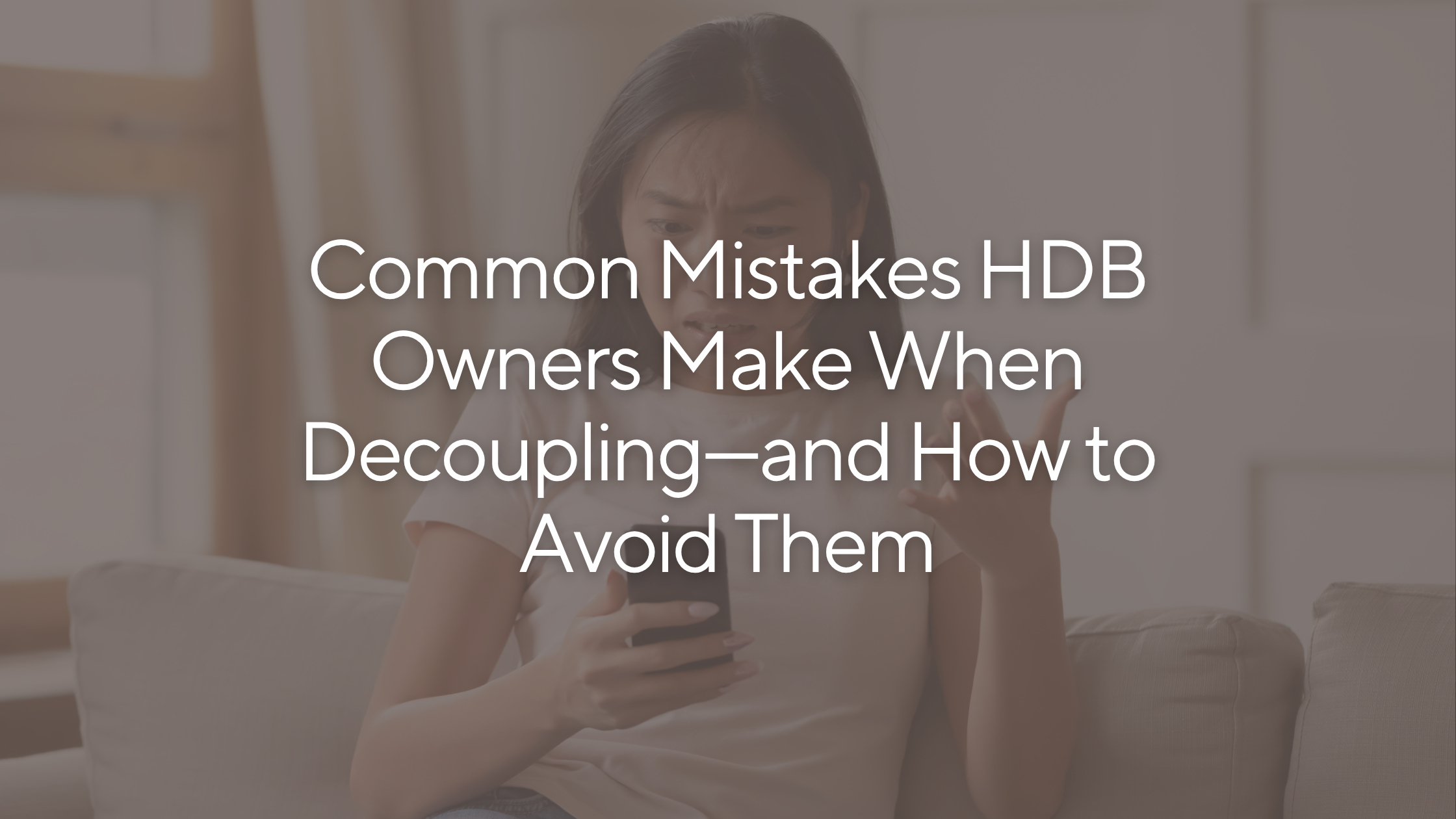Common Mistakes HDB Owners Make When Decoupling—and How to Avoid Them
HDB flats in Singapore can no longer be decoupled voluntarily. Ownership transfers are only allowed in divorce, while ECs can be decoupled after 5 years. Mistakes such as miscalculating CPF refunds, overlooking loan refinancing, or attempting DIY paperwork without a lawyer can lead to costly delays or rejection. A decoupling lawyer helps ensure compliance, proper documentation, and smooth execution.
Decoupling HDB used to mean transferring one co-owner’s share of a flat to the other so the outgoing party could purchase another property without paying Additional Buyer’s Stamp Duty (ABSD). That option is no longer available—HDB has closed the loophole.
Today, the only way an HDB flat can be “decoupled” is through a divorce order. However, if you own an Executive Condominium (EC), you may decouple after meeting the 5-year Minimum Occupation Period (MOP), since ECs are then treated as private property.
Whether in an HDB divorce transfer or EC decoupling, the process is full of legal and financial requirements. Here are the common mistakes owners make—and how to avoid them.
Key Takeaways
HDB flats cannot be decoupled voluntarily; only through divorce.
ECs can be decoupled after 5 years, via S&P or gift.
CPF refunds must include both the principal amount used and accrued interest.
Loan eligibility checks are crucial before starting EC decoupling.
Legal guidance prevents costly errors in paperwork, compliance, and court orders.
1. Miscalculating CPF Refunds
The rule: Any CPF funds used for the property, plus 2.5% accrued interest, must be refunded.
The mistake: Owners often forget accrued interest or underestimate the refund required.
How to avoid it: Request a CPF Property Withdrawal Statement early and confirm how the refund will be made (sale proceeds, cash, or CPF).
2. Confusing HDB and EC Rules
The mistake: Some owners still assume they can decouple HDBs via S&P or gift, not realising this is no longer permitted.
How to avoid it: Understand the difference—HDB transfer is only possible in divorce, while ECs can be decoupled after 5 years.
3. Overlooking Loan Refinancing (ECs)
If the remaining EC owner takes over the mortgage, they must meet TDSR and bank criteria.
The mistake: Not checking eligibility in advance, leading to loan rejection.
How to avoid it: Get an in-principle approval (IPA) before starting.
4. Underestimating Timelines
HDB divorce transfers and EC decoupling both take time.
The mistake: Committing to a new property before completion.
How to avoid it: Plan for 8–12 weeks minimum and buffer for HDB, CPF, and bank approvals.
5. Going DIY Without Legal Guidance
The mistake: Filing incomplete or incorrect documents, leading to rejections.
How to avoid it: Work with a decoupling lawyer to handle court orders (for HDB divorce cases) or draft agreements (for EC decoupling).
Get It Right the First Time
At YY Lee & Associates LLC, we’ve helped clients handle both HDB transfers in divorce and EC decoupling cases. Avoid costly errors and delays—let us guide you from start to finish.
📞 Call us: +65 8780 2499
📷 Instagram: @yylee_familylaw
FAQ
-
No, only through divorce as ordered by the court.
-
Yes, after the 5-year MOP, via S&P or gift.
-
Yes. In gifts, both refund. In S&P, the outgoing owner refunds from sale proceeds.
-
Yes—for HDB divorce cases and EC decoupling, legal guidance avoids costly mistakes.

